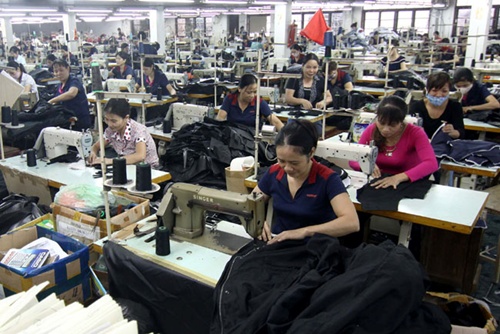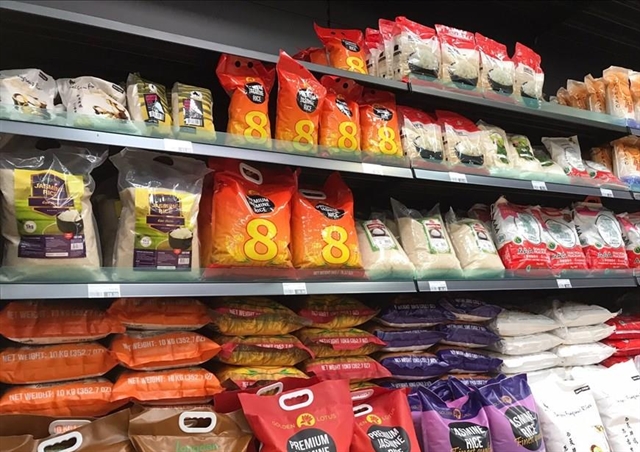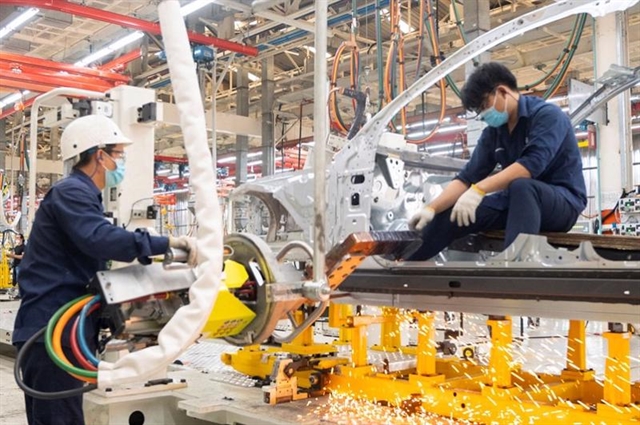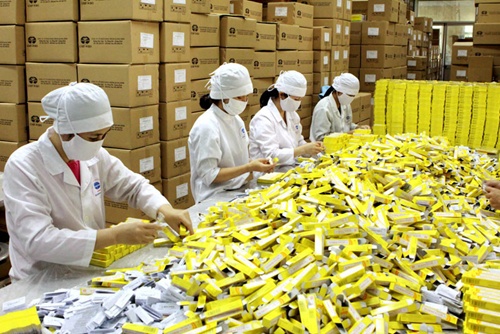Viet Nam poised to be biggest TPP winner
Viet Nam poised to be biggest TPP winner
Viet Nam could emerge as the single-biggest winner from the recently signed Trans-Pacific Partnership (TPP) trade agreement, according to ratings agency Fitch, with the potential for a significant increase in investment inflows and export opportunities.

Signed on October 5 and expected to come into force at the end of 2017, the TPP will bring Viet Nam, Australia, Brunei Darussalam, Canada, Chile, Japan, Malaysia, Mexico, New Zealand, Peru, Singapore and the US together into the world's largest trade bloc, creating a market of 800 million people that accounts for 40 per cent of global output.
"Of the 12 countries that are party to the TPP, models suggest that Viet Nam would see the biggest benefits in terms of economic impact," Fitch said in a statement issued in mid-October. "The free trade elements of the TPP will lower tariff barriers, giving Viet Nam greater access to large consumer markets in the US, Japan, Canada and Australia."
The other members of the TPP accounted for nearly 40 per cent of Viet Nam's exports and 23 per cent of its imports last year, according to local media reports, with a study by the US-based East-West Centre estimating that the lowering of trade barriers could see the country's outward trade volumes increase by up to 37 per cent over a 10-year period, while also reducing the cost of imports.
Eyeing Europe
Viet Nam is also eyeing trade opportunities further afield, with an in-principle agreement made with the EU in early August to establish a free trade agreement (FTA) that would remove almost all tariffs on goods traded between the two markets.
According to the European Commission, this marks one of the most symmetrical trade arrangements to date between the EU and a developing country and is expected to give Vietnam an edge over other ASEAN member nations, particularly in terms of manufactured or processed goods, which account for the majority of Viet Nam's exports to Europe.
Bilateral trade in goods reached 28.2 billion euro (US$ 30.1 million) last year, with 22.1 billion euro ($23.6 million) worth of Vietnamese exports, according to the European Commission.
While a date has yet to be given for finalising the terms of the FTA or a timeframe for implementation, EU officials say they hope to have the technical details of the agreement in place by the end of the year.
Foreign investment potential
Industry is already attracting the bulk of incoming investment in Viet Nam, with the processing and manufacturing sectors accounting for $12.4 billion in registered foreign capital in the first 10 months of 2015, equivalent to 64.7 per cent of total registered capital, according to the Ministry of Planning and Investment. Foreign investment was up 40.8 per cent year-on-year over the period.
This substantial growth is likely in part due to the government's announcement in June that the foreign investment caps for a wide range of industries will be raised from 49 per cent to 100 per cent, while privatisation efforts are expected to further stoke investor interest.
In mid-October the State Capital Investment Corporation (SCIC) unveiled plans to privatise 10 state-owned enterprises in a move expected to generate around $4bn. While a timetable for the divestments has yet to be announced, targeted companies include FPT Telecom, local plastics producer Binh Minh Plastics and Vinamilk, the country's largest dairy producer.
Although Lai Van Dao, general director of the SCIC, told local media in early November that the initial public offering was expected to include around 10 per cent of Vinamilk's shares, the company has signalled a broader openness to foreign investment. Speaking to local media in August, Mai Kieu Lien, the company's CEO, said she "did not see any problems if foreign investors hold 100 per cent of Vinamilk's stake".
Targeting skills upgrades
While Viet Nam's financial sector is upbeat about the forthcoming TPP, many in the manufacturing industry will likely need to raise their standards in order to fully benefit from the new trade regime, according to Trinh Thanh Can, CEO of ACB Securities.
"The TPP will surely attract more foreign direct investment to Viet Nam and create jobs, but less formal, medium-d companies will have no choice but to make improvements," he told OBG.
With the newly negotiated trade deals granting Vietnamese goods access to more markets around the world, competition from other lower-income countries in the region – notably Myanmar, Bangladesh and Cambodia – could increase pressure on Viet Nam to increase the skills base of its workforce.
A shortage of qualified labour remains a problem for many sectors, Nguyen Hong Ngan, general director of Binh Minh Plastics, told OBG.
"Labour is still a central issue in Viet Nam," he said. "The country needs to develop a proper training centre in order to bridge the current skills gap."
While the EU expects investments and trade with Viet Nam to rise as a result of its FTA, the bloc's ambassador to the country also sees the narrow skills base as an impediment to expansion.
"Joint partnership investors are having difficulties finding the right labour," Bruno Angelet, the EU's ambassador to Viet Nam, told Oxford Business Group. "Viet Nam needs an upskilling of labour, and education and vocational training are the key to achieving this."
With the added incentive of expanded markets opening for the manufacturing and processing sectors, the drive to upskill is likely to be given even greater impetus.
Though many firms will need to retool and boost their performance to compete on the international stage, as one of the least developed countries in the TPP, Viet Nam stands to benefit the most, Can added.



















